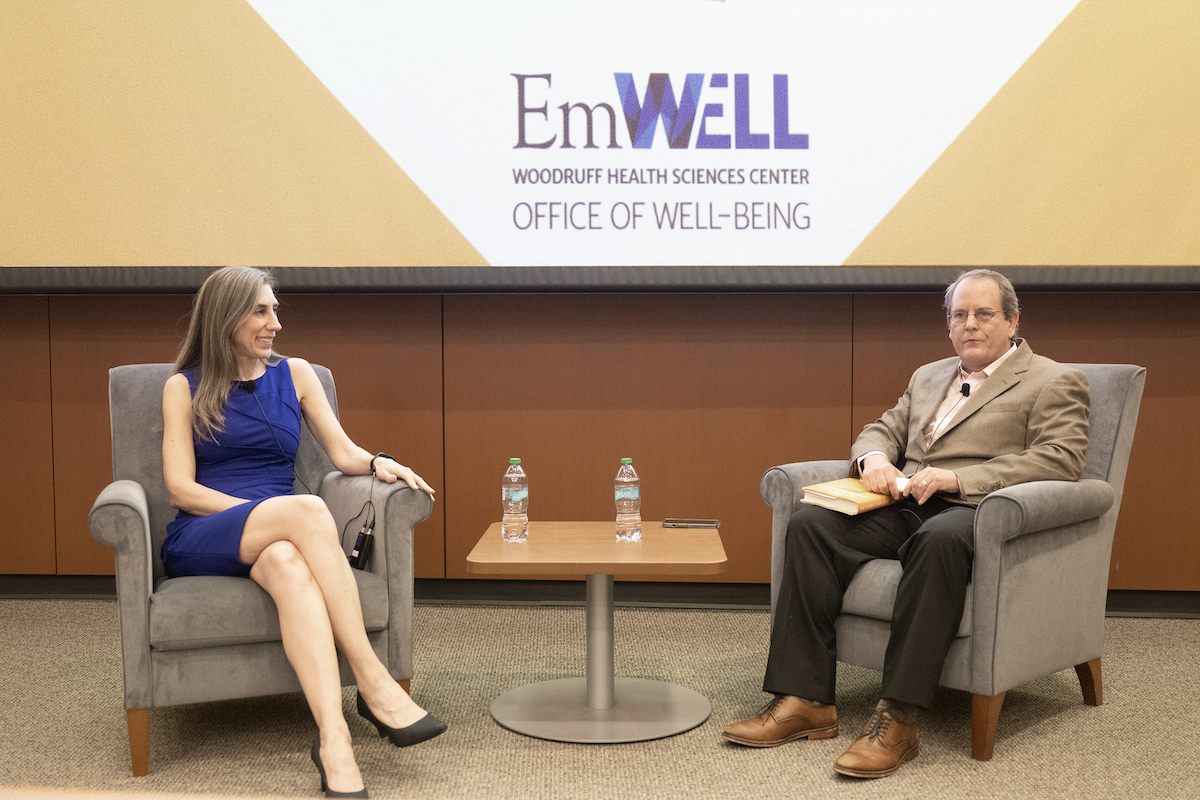Over time, physician Sharon Bergquist found herself having the same conversation again and again with her patients as an Emory internist.
“I've been at Emory for 25 years, and I felt really well trained to diagnose disease and to manage a lot of chronic medical conditions,” says Bergquist. “But the underlying problems were just progressing.”
Processes like inflammation and insulin resistance were manifesting in her patients in different, often worsening, complications over time. That set Bergquist on a path of learning everything she could about disease prevention, managing conditions without reliance on medication and how to help people optimize longevity through lifestyle choices like nutrition, exercise and stress management.
“Eighty percent of the chronic diseases we see are preventable, and I feel strongly that prevention needs to be a part of how we deliver care,” she says. “That’s the better approach to the future of health care.”
Everything Bergquist learned, she has compiled in her latest book, “The Stress Paradox: Why You Need Stress to Live Longer, Healthier, and Happier.”
Bergquist, associate professor of medicine and medical director of Emory’s Executive Health program, was the featured expert at the Woodruff Health Science’s Center Office of Well-Being (EmWELL) Speaker Series launch in April at the School of Medicine.
She was joined by Peter Sprague, Emory assistant professor of physical therapy, for a thought-provoking conversation about the concept that stress — when managed effectively — can contribute to a longer, healthier and happier life.
Our bodies, Bergquist says, have an incredible capacity to heal and regenerate. But modern lifestyles, from the foods we eat to our level of inactivity, are harming our cells.
“Isn’t stress what exacerbates these problems?” asked Sprague.
Yes and no, Bergquist says.
“What we think of as chronic stressors — difficult situations, relationships, financial hardship — those types of stressors are the predominant kind in our lives,” she explains. “And we make stress synonymous with something negative, something harmful.”
But, she says, “if you understand stress at a molecular and cellular level, we also see that stress can strengthen and enrich our bodies. The paradox is that we actually need these good stressors to help build the resilience to the chronic stressors that we can't always avoid or control.
“Our goal isn't to cut stress out of our lives,” she adds. “It’s to optimize it and use it to strengthen us.”
Good stress, she says, has to do with the four Rs: resist, repair, recycle and recharge.
“What makes stress good is that our bodies are designed and adapted for brief intervals of mild-to-moderate stress, followed by strategic recovery.”
Our hunter/gatherer ancestors lived in harsh and uncertain environments, Bergquist explains. These obligatory exposures to stress — like periods of fasting due to lack of food, escaping predators, hunting prey, or exposure to the elements and potential plant toxins — allowed our bodies to adapt to a certain amount of stress. That helped our species thrive.
The four Rs are related to the fact that our bodies, through these cellular stress responses that we’ve adapted capabilities to handle, can resist damage in the form of inflammation and oxidative stress. Our bodies also can repair damage to our proteins and DNA; can recycle different components of our cells (old and damaged parts); and can recharge by strengthening and building more mitochondria.
In fact, the four Rs can improve all cells, from brain to heart.
Some of these processes are “only activated through physical activity, which we're not getting enough of presently,” Bergquist says. “In the last 200 years, we introduced a lot of conveniences, and we can certainly argue that they’ve made our lives better. But it’s come at a cost. … The lack of good stress is one of the biggest and most underestimated risk factors right now harming our health.”
So, the question, says Sprague, is how much good stress is enough good stress?
“Where is that balance?” restates Bergquist. “There are five key stressors mentioned in the book: dietary stress from plants; physical stress from exercise; thermal stress from hot and cold; metabolic stress from intermittent fasting; and emotional and mental challenges. That's what activates our healing defenses. You want to go a little bit outside your comfort zone, but not to the point of being overwhelmed. That is the range where you can maximize your resilience.
“Just as we know that too much stress can be harmful, we’re also discovering that not enough stress is just as harmful,” she continues. “Without the stimulus of adequate stress, we are weakened.”
These good stressors, Bergquist says, are everyday things we can all be doing.
For instance, there are more than 30,000 edible plant foods in the world.
“We cultivate around 150 of these, and only about 30 make it to our plate each year,” she says. “So, the first thing is plant food diversity: eat as many different kinds of plants as you can, whenever you can.”
Good stressors create a regenerative energy, she says. “The impact they have is actually life changing. They set off this incredible cascade of energy and confidence and possibility.”
A recording of Bergquist and Sprague’s conversation is available to view online.

